Unravelling The Mystery Of The Ulfberht Sword – An Ancient Viking Artifact Far Ahead Of Its Time
Ellen Lloyd - AncientPages.com - Did Vikings possess superior ancient technology ahead of their time? Can archaeologists solve the puzzle of this old Scandinavian mystery?
Whose name is inscribed on this enigmatic ancient sword?
Digital model of an Ulfberht sword. Image credit: Dominic Zschokke - CC BY-SA 4.0
We may think we know a lot about Vikings. They are often portrayed as crude people that should be feared. We tend to forget that some of their ancient artifacts have remained a puzzle for years.
Among them, we find the mysterious Ulfberht sword, a very advanced weapon from thousands of years ago. Archaeologists have been trying to figure out how the Vikings could use such pure metal.
What made the Ulfberht blades so advanced?
Ulfberht swords were used in Scandinavia during the Viking Age. Ulfberht blades were made of crucible steel with relatively high carbon content, making them more robust and flexible than European swords during the Viking and Middle Ages. Archaeologists have discovered 171 such blades.
Crucible steel could not be produced in Europe until the Industrial Revolution in the 18th century. Still, in India, such steel (known as wootz, has been manufactured since 300 BC and has spread to large parts of the Middle East during the 9th century. Vikings probably gained access to the material from Persia via the trade route across the Volga and the Caspian Sea.
The design of these swords is similar to ordinary Viking swords and indicates that blades were forged in Europe, probably in the Frankish Empire.
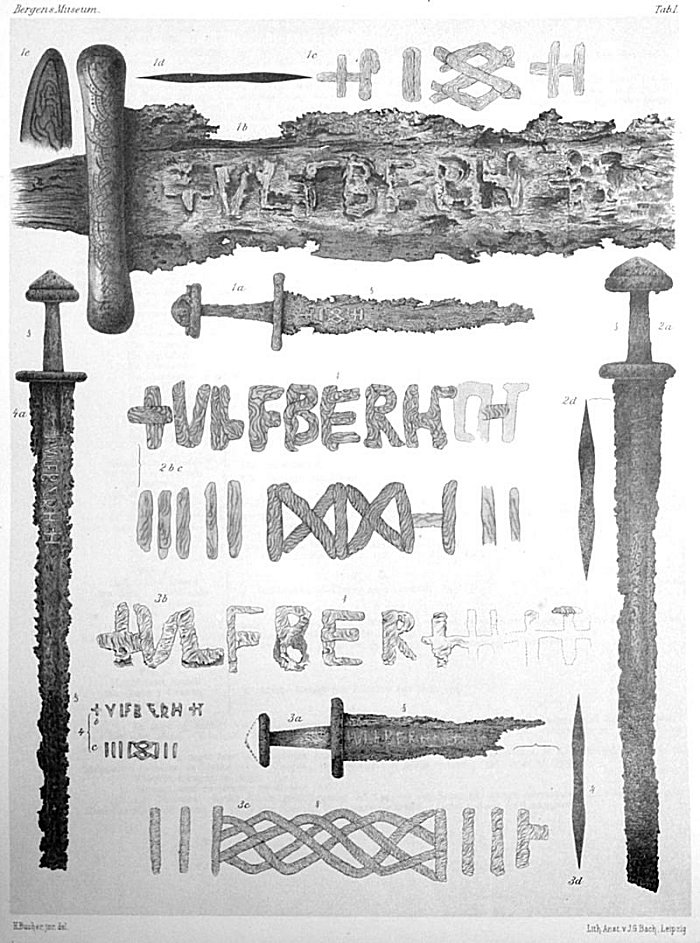 Four Ulfberht swords were found in Norway (drawings from Lorange 1889). Anders Lorange (died 1888). Public Domain
Four Ulfberht swords were found in Norway (drawings from Lorange 1889). Anders Lorange (died 1888). Public Domain
Ulfberht swords' metal was comparable to the strength of modern steel. At the same time, most Viking blades were composed of slag-ridden, low-carbon steel. The mystery was how the Vikings created these blades while the rest of Europe still made steel that could shatter like glass.
Up to now, about 170 Ulfberhts have been discovered, dating from 800 to 1,000 A.D.
How they were created is, therefore, an enigma. In the process of forging iron, the ore must be heated to 3,000 degrees Fahrenheit to liquefy, allowing the blacksmith to remove the impurities (called "slag").
Ulfberht's combination of strength, lightness, and flexibility was an advantage. Medieval blacksmiths in Europe didn't make slag-free steel because their fires weren't hot enough to liquefy the iron fully. In modern times, metals are melted at temperatures over 3,000 degrees.
It separates the slag and allows more carbon to be mixed in evenly. But in the Viking era, carbon could only be introduced incidentally, mainly through the coal in the fire, and the only way to remove the slag from the metal was to try to hammer out the impurities with each strike.
Of the thousands of European swords unearthed and dated to the Middle Ages, they all seemed to have been made from this inferior steel.
Dr. Alan Williams, an archaeometallurgist and consultant to the Wallace Collection, the London Museum, which has one of the best assemblies of ancient weapons in the world, analyzed the Ulfberht.
One of three Ulfberht swords found in the territory of the Volga Bulgars. Its hilt (classified as Petersen type T-2) is decorated with three lines of round holes inlaid with twisted silver wire. Image credit: Dbachmann - CC BY-SA 4.0
"The swords were far better than any other swords made, before or since, in Europe. And these must have been extraordinarily valuable to their contemporaries because of their properties.
One or two swords I looked at seemed to be different. They were made of steel, which I'd never seen in a medieval object before or since. This seems to be a completely different material.
The first thing that strikes you is that there are none of these long, grey slag inclusions, which make the metal brittle. The uniformity is more like modern steel than it is medieval one. And it has got a carbon content of about three times as much as the medieval steel we looked at a moment ago. I thought it was very odd. I couldn't think of a reason for it.
The material used was novel material, not found anywhere else in Europe in the middle ages," Dr. William says.
"The biggest mystery is where did they (the Vikings) get this raw material? We have no archaeological evidence of any crucible steel production in Europe until 800 years later," Richard Furrer asks in the NOVA documentary.
Scientists suspect the metal came from the Middle East.
Spatha, an Ulfberht sword, from the Rhine at Mannheim, 1st half of the 9th century, displayed at the Germanisches Nationalmuseum, Nuremberg. Image credit: Martin Kraft - CC BY-SA 3.0
"The interesting thing is that the most Ulfbehrt swords are dated from exactly the same time when the Volga trade route was open, that is from the early 800s to the mid-1,000s.
I think it's very likely that the steel you find in the Ulfberht swords originated from Iran. I would guess that you bought it from friendly trading connections in Iran, paid with furs and other Nordic commodities, and took it back on the small ships that you used on the rivers," says Fredrik Charpentier Ljungqvist, Secretary for the Centre of Medieval Studies at Stockholm University, Sweden.
The Vikings were among the fiercest warriors of all time. However, not many of them carried the Ulfberht sword. Created by using a process that would remain unknown to the Vikings' rivals for centuries, the Ulfberht was a revolutionary high-tech tool. It was also a real work of art. The swords were inscribed with the signature "+ULFBERH+T," but the origin of the name remains a mystery.
Considered one of the most excellent swords ever made, it remains a fearsome weapon more than a millennium after it last saw battle. How did Viking sword makers design and build the Ulfberht, and what was the weapon's role in history?
We have come one step closer to unraveling the mystery of the enigmatic Ulfberht Sword, but we still do not possess complete knowledge about this ancient Viking artifact.
Written by - Ellen Lloyd – AncientPages.com
Updated on January 21, 2024
Copyright © AncientPages.com All rights reserved. This material may not be published, broadcast, rewritten or redistributed in whole or part without the express written permission of AncientPages.com
Expand for referencessource:
Oakeshott R. Ewart, The Sword in the Age of Chivalry
More From Ancient Pages
-
 Weapons Of Ancient Aztec Warriors Of Mesoamerica
Featured Stories | Mar 23, 2017
Weapons Of Ancient Aztec Warriors Of Mesoamerica
Featured Stories | Mar 23, 2017 -
 Chankillo: A 2300-Year-Old Solar Observatory in Peru
Civilizations | Sep 2, 2015
Chankillo: A 2300-Year-Old Solar Observatory in Peru
Civilizations | Sep 2, 2015 -
 Evolution Might Stop Humans From Solving Climate Change – Researchers Say
Evolution | Jan 3, 2024
Evolution Might Stop Humans From Solving Climate Change – Researchers Say
Evolution | Jan 3, 2024 -
 DNA Analysis Shows Griffin Warrior Ruled His Greek Homeland
Archaeology | Aug 26, 2022
DNA Analysis Shows Griffin Warrior Ruled His Greek Homeland
Archaeology | Aug 26, 2022 -
 Petroglyphs At The Winnemucca Lake: North America’s Oldest Known
Featured Stories | Sep 10, 2018
Petroglyphs At The Winnemucca Lake: North America’s Oldest Known
Featured Stories | Sep 10, 2018 -
 Hundreds Of Highly Unusual Burial Gifts Found In Special Viking Chamber Belonging To Woman In Norway
Archaeology | Nov 26, 2020
Hundreds Of Highly Unusual Burial Gifts Found In Special Viking Chamber Belonging To Woman In Norway
Archaeology | Nov 26, 2020 -
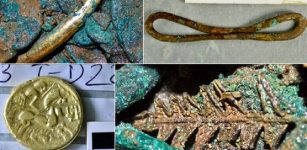 Remarkable Le Catillon II Hoard – World’s Largest Collection Of Celtic Coins And Jewellery
Archaeology | Nov 24, 2015
Remarkable Le Catillon II Hoard – World’s Largest Collection Of Celtic Coins And Jewellery
Archaeology | Nov 24, 2015 -
 Excavations Begin In Ancient City Of Antiocheia Ad Cragnum, Turkey
Archaeology | Sep 4, 2015
Excavations Begin In Ancient City Of Antiocheia Ad Cragnum, Turkey
Archaeology | Sep 4, 2015 -
 Nabataean Culture Lived On Long After Their Kingdom Disappeared – New Evidence
Archaeology | Feb 27, 2019
Nabataean Culture Lived On Long After Their Kingdom Disappeared – New Evidence
Archaeology | Feb 27, 2019 -
 Forbidden Underwater Discovery Could Re-Write Ancient History But The Investigation Was Stopped
Ancient Mysteries | Aug 27, 2019
Forbidden Underwater Discovery Could Re-Write Ancient History But The Investigation Was Stopped
Ancient Mysteries | Aug 27, 2019 -
 Five Rare Bronze Age Axe Heads Found In Polish Forest
Archaeology | Dec 8, 2023
Five Rare Bronze Age Axe Heads Found In Polish Forest
Archaeology | Dec 8, 2023 -
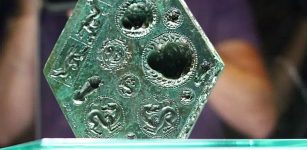 Unique 2,000-Year-Old Hexagonal-Shaped Bronze Matrix Of Sarmizegetusa Regia, Romania
Artifacts | Jan 7, 2016
Unique 2,000-Year-Old Hexagonal-Shaped Bronze Matrix Of Sarmizegetusa Regia, Romania
Artifacts | Jan 7, 2016 -
 Biblical Lydia ‘Woman Of Purple’ Who Run Her Own Business
Biblical Mysteries | Apr 9, 2019
Biblical Lydia ‘Woman Of Purple’ Who Run Her Own Business
Biblical Mysteries | Apr 9, 2019 -
 Mystery Of The Lost Underground City Of The Grand Canyon
Featured Stories | Nov 19, 2014
Mystery Of The Lost Underground City Of The Grand Canyon
Featured Stories | Nov 19, 2014 -
 Why Napoleon’s Invasion Of Russia Was A Fiasco
Ancient History Facts | Mar 31, 2017
Why Napoleon’s Invasion Of Russia Was A Fiasco
Ancient History Facts | Mar 31, 2017 -
 Kalaripayattu – 3,000-Year-Old Indian Martial Art From Which Kung Fu And Karate Emerged
Ancient History Facts | Sep 6, 2020
Kalaripayattu – 3,000-Year-Old Indian Martial Art From Which Kung Fu And Karate Emerged
Ancient History Facts | Sep 6, 2020 -
 Runic Inscription On The Viking-Age Galloway Hoard Deciphered
Archaeology | Feb 13, 2025
Runic Inscription On The Viking-Age Galloway Hoard Deciphered
Archaeology | Feb 13, 2025 -
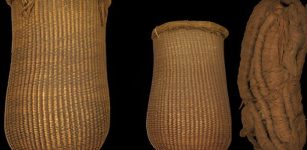 9,500-Year-Old Baskets And 6,200-Year-Old Sandals Found In Spanish Cave
Archaeology | Sep 28, 2023
9,500-Year-Old Baskets And 6,200-Year-Old Sandals Found In Spanish Cave
Archaeology | Sep 28, 2023 -
 Ancient Unsolved Mysteries Of Siberia – A Place Full Of Secrets
Featured Stories | May 19, 2014
Ancient Unsolved Mysteries Of Siberia – A Place Full Of Secrets
Featured Stories | May 19, 2014 -
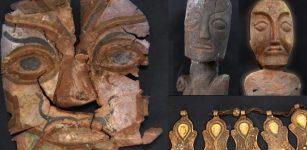 Golden And Silver Facial Ornaments, Wooden Figurines Among The Finds In Tomb Of Tibetan Plateau
Archaeology | Dec 28, 2020
Golden And Silver Facial Ornaments, Wooden Figurines Among The Finds In Tomb Of Tibetan Plateau
Archaeology | Dec 28, 2020



